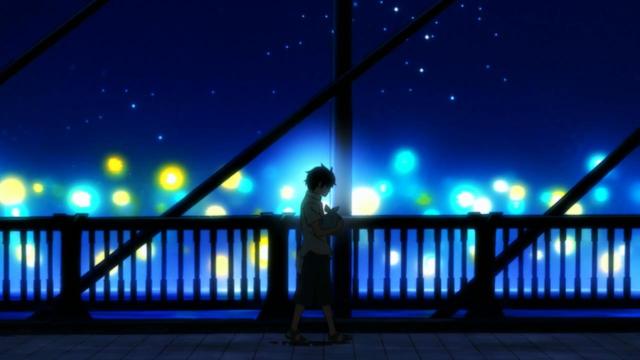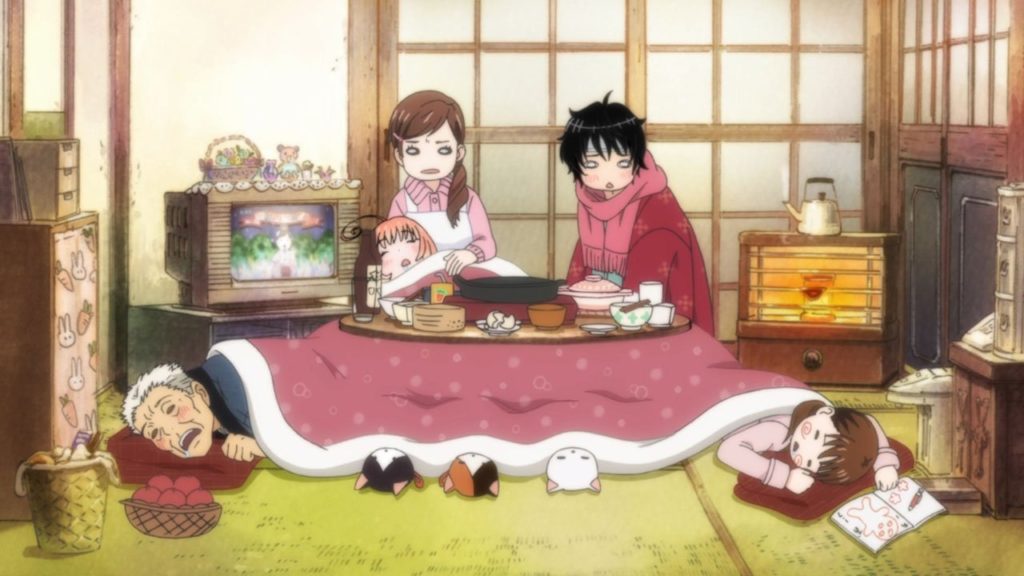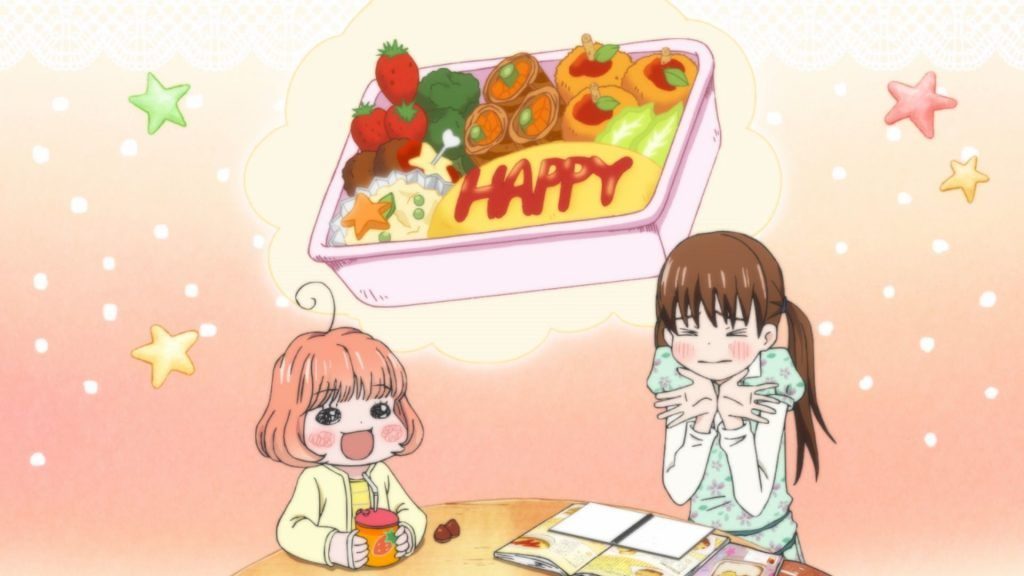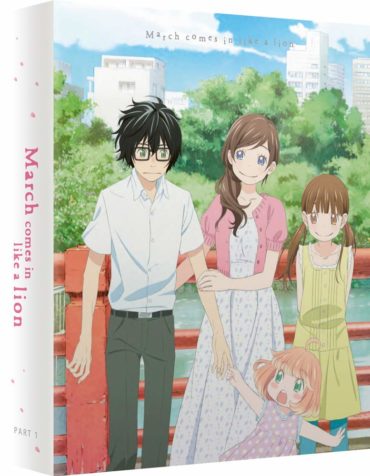March Comes In Like A Lion Season 1 Part 1 Review
March Comes in Like a Lion, is an adaption of the most recent manga series from creator Chica Umino (of Honey and Clover fame). It tells another character-focused story in a setting and time that all those with an interest in anime and manga are very familiar with. The adolescent high school years of life are full of storytelling potential, as people make the complex, emotional and often volatile transition into adulthood. These stories can be loud, passionate and full of melodrama, making them rich in entertainment value; however, March Comes in Like a Lion doesn’t seem to be concerned with telling another story in this fashion. It instead takes issues many of us will have struggled with in those teenage years such as relationships with family, peers and mounting social pressure. Then even more imposing issues such as anxiety, loneliness and even depression. Instead of being brash with these themes, it handles them with more care and tells a story that is humble, honest, and much more relatable for it.

It does this through showing the day-to-day life of Rei Kiriyama, a shogi prodigy who managed to achieve professional status when he was only in middle school. Now aged 17, having faced great tragedy already in his life, Rei finds himself living alone and struggling with the emotions that come with his difficult personal circumstances.
The story is not all gloom, however, and there is actually a very strong lighthearted and comedic side to the series. This is presented through interactions with several people that come into Rei’s life, such as his “best friend” and “rival”, Harunobu Nikaido. Outside of their shared aspirations to succeed as professional shogi players, they are polar opposites, with Nikaido being both confident and an outgoing personality. Most importantly though, are the Kawamoto sisters. Three sisters who, despite similar tragedy in their lives, have kept a sunny outlook and wish to help Rei however they can. The oldest sister, Akari, is in her early twenties and is a caring, mother-like figure to her family. She is outgoing and has a fondness for taking in strays, which is evident by the cats littered around the house. This aspect of her personality is what led to her helping a downtrodden Rei in the first place and changing his life for the better. The second sister, Hinata, is in middle school and more immature than her older sister (and definitely a lot less organised) but is still as caring and thoughtful. Momo, the youngest of the three sisters, is little more than a toddler and provides many a cute moment in the series. The friends, family and opponents that Rei interacts with through this first part of the series are the driving force for reflection on his life and circumstances as he tries to continue to develop as a shogi player and, more importantly, as a person.

Rei is a very melancholic character, as to be expected with the tragedy he has faced in his life. He struggles with understanding his own emotions and place in the world, as many teenagers do, but his personal circumstances only amplify these difficulties. It’s not explicitly said (at least not in these first eleven episodes) but it’s clear that Rei struggles with a form of depression. It’s only made worse by the unhealthy lifestyle he leads and he has little motivation to improve his life outside of developing his shogi skills. March Comes in Like a Lion deals with this as a major theme, but doesn’t beat you over the head with it and instead we learn of its extent gradually through seeing his routine, one day at a time. The show’s regular use of its water motif as a metaphor for this struggle acts as a great tool in understanding Rei. With visual examples such as being submerged in water to represent the feeling of being overwhelmed, or swimming against the current used to symbolise the struggle to reach an objective. Rei is the character we, as viewers, spend the most time with, so touches like this are invaluable in helping us empathise with him as the story continues.
The story for this first half of Season 1 works well as a foundation. It introduces many characters whose roles are big and small, but always in an organic way, and for the most part maintains a good balance between the shifting tone of highs and lows throughout. Rei’s reflective inner monologue does a great job of guiding the narrative, explaining aspects of characters and their circumstances that are relevant to each particular situation. The story isn’t always told in a linear way, but with this inner monologue, the viewer is shown flashbacks and other key events as they are relevant without this being jarring to the flow of an episode. It also emphasises Rei’s deeply analytical mind, a key part in understanding his strategic mentality as a top shogi player.

This journey through the world of professional shogi may be what guides the narrative of March Comes in Like a Lion, but don’t let it fool you into thinking this is akin to a sports anime, or even an anime centered on the game of shogi. It makes the effort at times to explain several aspects of shogi but rather than focus on every gambit and turn of Rei’s games, it instead emphasises the emotions of the players. Choosing instead to focus on how they react to one another and highlight the mentally taxing nature of these games, that can often span hours. One way the series tries to explain the rules of shogi (which are similar to chess) is through a musical number called the Meow Shogi Song, where animated cats in the roles of the pieces act out their moves. This may be a good breakdown of the rules but I personally found the song incredibly grating, particularly as it returns regularly.
The series starts to fall into a structure as it progresses, with each new opponent essentially getting their own small arc in the story as we learn of their motivation. It makes every win or loss feel significant for either player and really gives an understanding of how intense a competitive culture can be at a professional level. If I did have a criticism of this structure, it would be of the later part of this volume. When Rei’s adoptive sister, Kyoko, is introduced, it feels like the series’ carefully controlled but varied tone instead maintains a sad outlook for some time, with little reprieve. With Rei juggling consecutive opponents, illness and pestering from Kyoka, it felt like breaks from the gloomy tone were few and far between. I assume it was intentional as it does build tension towards one of the more powerful outbursts of emotion in the series to this point, however, his enjoyable interactions with the sisters were certainly missed.

The animation is handled by Shaft. They have done an excellent job in showing their characteristically diverse range of visuals that embody the tonal range of the series. The standard of animation stays fairly consistent across this volume, and though it may not be flashy, there is a lot to admire visually about the series with some interesting artistic styles and ideas incorporated. Shaft have been loyal to the art style of the source material, which is admirable, but there are times that I find the wide mouths and eyes without pupils characteristic of the manga a bit odd. The tonal contrast of the series is best expressed through the visuals, particularly that of the settings and their colour palettes. Rei’s scenes of isolation, either those in his lonely and bare apartment, or outdoors as he walks under the night sky, are coloured with muted shades of blue. The night sky regularly has a painterly quality, with striking similarities to Vincent Van Gogh’s painting Starry Night. Alongside Rei’s melancholic narration, the painted sky makes it feel like he is walking through a dream. These scenes are in complete contrast with those set in the Kawamoto home, its palette consisting of warm pastel colours, with backgrounds appearing as if done freehand in pencil, in a manner that would feel right at home in a Raymond Briggs illustration. Then there are the comedic moments of the series that tend to adopt a minimalist style, where characters are much more expressive and the voice acting is greatly exaggerated. Breaking the sombre tone abruptly, but usually with hilarious results as the punchline is delivered.

The music for the series is composed by Yukari Hashimoto, who does an excellent job in establishing the atmosphere of the series. The music works hand-in-hand with the visuals, with some songs being uplifting and playful such as 3 Sisters and Meal. While others songs like Shogi House are a complete contrast, accented with slow and deliberate ringing piano notes that echo as if played in a vacuum. The first of these two upbeat songs represents the positive atmosphere of the Kawamoto home, the latter represents the lonely apartment that Rei lives in: a cold environment used purely for function rather than being a real home. Hashimoto’s soundtrack on its own is excellent but it’s amazing how well it works with the expressive animation.

The opening and ending songs are Answer and Fighter respectively, by Bump of Chicken. Both upbeat, catchy songs that often stand out from the sombre scenes that surround them. They are accompanied by further examples of Shaft’s use of various animation styles, with both opening and ending regularly incorporating the series’ water motif into the visuals.
This release of Series 1, Part 1 comes as a collector’s edition and contains Episodes 1-11 (split across 3 Blu-ray discs) followed by a recap episode. The packaging is a rigid case, with a digipack to house the discs. This comes with a 40-page booklet of production notes and character profiles. In terms of features there is the usual textless opening and closing title sequences, trailers and… (sigh) the Meow Shogi Song as a standalone featurette. The release comes with the original Japanese audio with English subtitles, as well as the English dub. Both are acted very well and I felt both casts worked equally in terms of expressing their characters and conveying the complex emotions of the series.

March Comes in Like a Lion is a thoughtful series that manages to take many common themes from typical coming-of-age stories and grounds them in a way that resonates. Through layered characters, excellent visuals and a careful control of narrative tone, it provides a brilliant introduction into its emotional story and themes. I look forward to seeing how it builds on such a strong start into the next part of the series.


